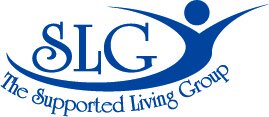How the SNAP “Freeze” Could Impact Brain Injury Survivors and How SLG Can Help
Understanding the SNAP “Freeze”
Recent federal funding uncertainty surrounding the Supplemental Nutrition Assistance Program (SNAP) has put benefits at risk for millions of Americans. While much of the national conversation focuses on general food security, the potential impact on individuals recovering from brain injury is especially concerning.
Consistent access to nutrition is vital for brain health, emotional regulation, and overall recovery. When that stability is threatened, survivors and their families can experience profound setbacks — both physically and emotionally.
What Is a SNAP “Freeze”?
As of late October 2025, federal officials have indicated they may not release emergency funds to cover a projected SNAP shortfall. Without additional funding, some states could see delays or reductions in November benefit payments.
This development stems from broader federal budget disputes and could leave millions of vulnerable households uncertain about their ability to meet basic nutritional needs.
Why This Matters for Brain Injury Survivors
1. Higher Risk of Food Insecurity
Research shows that people with disabilities, including those with acquired or traumatic brain injuries (ABI/TBI), experience significantly higher rates of food insecurity than the general population. Many face barriers to enrollment, benefit management, and transportation, all of which make a SNAP freeze especially harmful.
2. Nutrition and Recovery
Brain injury recovery depends heavily on consistent access to proper nutrition. Adequate calories and balanced nutrients support cognitive healing, emotional stability, and energy regulation. Even short disruptions to food access can worsen symptoms, increase fatigue, and heighten behavioral challenges.
3. Compounding Stress and Safety Risks
When families are forced to choose between food, medication, and rent, stress levels rise sharply. This can contribute to mental health relapse, caregiver burnout, and instability in the home, especially for those already navigating neurological and emotional challenges.
A Balanced Look at the Policy Debate
From a fiscal perspective:
Some policymakers argue that emergency reserves should be preserved for natural disasters or major crises, suggesting that long-term reforms, not short-term funding patches, are the better solution.
From a public health perspective:
Advocates and disability organizations warn that even temporary interruptions in SNAP benefits can have immediate and measurable harm, especially for households already managing complex medical and financial needs.
Both views highlight the tension between budget responsibility and human need, making it essential for community-based providers to fill the gaps when public benefits falter.
What Families May Experience
Missed or reduced EBT deposits
Increased reliance on food banks with limited ability to meet medical dietary needs
Added financial pressure that disrupts rehabilitation attendance or family routines
Heightened emotional and relational strain within households
Practical Steps Families and Providers Can Take
1. Check Your SNAP Status
Confirm your benefit timeline, update contact information, and ensure all recertification documents are current.
2. Build a Short-Term Food Plan
Prioritize shelf-stable, nutrient-dense options like canned proteins, fortified cereals, and milk alternatives.
3. Connect With Local Resources
Community food banks, religious organizations, and municipal programs may offer emergency grocery support or delivery services.
4. Coordinate With Providers
Ask your care team or case manager to incorporate food access planning into your ongoing support or recovery plan.
How The Supported Living Group Can Help
At The Supported Living Group (SLG), we understand the unique challenges brain injury survivors face when public benefits fluctuate. Our non-medical support services are designed to help individuals and families stay safe, stable, and connected, even in times of uncertainty.
Our supports include:
Service Coordination: Assistance in navigating benefit renewals, appeals, and emergency resources.
In-Home and Community Supports: Help with grocery shopping, meal preparation, and daily living routines.
Caregiver Support and Respite: Reducing burnout and promoting household stability.
Resource Navigation: Connecting families to nutrition, mental health, and community supports across Connecticut.
References
U.S. Department of Agriculture, Economic Research Service: SNAP Trends and Participation Among People With Disabilities
Centers for Disease Control and Prevention: Nutrition and Cognitive Health in Brain Injury
National Disability Rights Network: Policy Brief on Food Insecurity and Disability
Recent reporting on the 2025 SNAP funding shortfall (The Washington Post, Reuters, NPR, October 2025)
About The Supported Living Group
The Supported Living Group (SLG) provides person-centered, non-medical supports for individuals with brain injuries, autism, and other neurodiverse conditions across Connecticut. Through our community-based programs, we promote independence, connection, and meaningful recovery.
Learn more about our services: Connecticut's leading disability support provider

